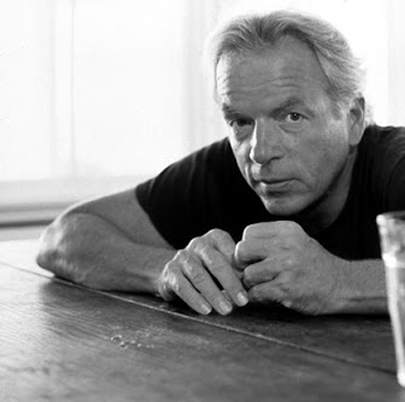Why Spalding Gray is not yet a national treasure is a mystery to me.
Expert Storyteller
He developed a body of work that allows us to experience the classical hypodiegetic story, or frame story, which forms the core of every major story tradition or song cycle. This story structure, which predates settled civilization, is an excellent analogy for understanding sense of place.
hypodiegetic
In brief: a frame story is a macro narrative that is tangentially referenced occasionally by individual stories. Shahrazad and Shahryar are the frame story for the Alf Layla Wa Layla (aka Arabian Nights Entertainments), and the 1000 and 1 tales are framed by her struggle to entertain her murderous husband. Similarly, Manhattan, the city, frames a variety of modern entertainment that forgoes long-narrative arcs by maintaining an episodic format (such as Seinfeld, Friends, or Sex in the City). These situational comedies are situated in a particular place that frames the stories: Manhattan. We as story consumers (aka audience) are entertained but have our own frame (aka our lives) which we experience all other stories within.
We live in a frame story of which we rarely see the boundaries.
A eulogies is a frame story of our whole life, into which loved ones provide anecdotes to humanize us in the eyes of others (our last audience). Our lives will be meaningful depending on how much of our frame story influences the life-paths of others. Some of us take enormous risks, act in surprising ways, and shift the frame stories many of us share at a familial, neighborhood, city-wide, national, or (rarely) species-wide level. Those individual acts of such import are still within the frame story of the individual’s total life, so sensationalist biographers are keen to find a thread of continuity that transforms a great political actor into a classic hero or villain by suggesting the great action was always coming.
Any one person’s life-story is meaningful when related without theatrics.
This is what Spalding Gray demonstrates. He provides a significant scope of his life as defined by an outside event (ex. his first film, Swimming to Cambodia is framed by his experience making the film The Killing Fields, his second, Monster in the Box, framed by his process of writing his first fictional novel). While the outside event is occasionally referenced in the thread of his monolog, it is utilized more to close episodic stories and start new ones. The frame story allows us the audience to anchor our expectations into a big undertaking that sets up a domain, a kind of neighborhood to which the rest of the stories are giving deference.
The individual stories within a frame story are best when they show characters in different lights.
One story may seem heroic, another craven, and yet another loving. That diversity of themes allows the character to reflect the human condition that we share with them. This is how a character or storyteller behaves ethically: by showing they are neither divine nor deviant. This explains the fundamental power of ethos described by Aristotle in his Rhetoric. An audience is much more likely to take a teller seriously if there is an expressed honesty in the story, an honesty anchored in common human experience.
In a similar way, when setting is leveraged as a frame for many stories, it humanizes the characters by imposing its requirements. Manhattan’s imposition of subways and homeless people on the characters grounds their reactions in a real place that unites them, but also is meaningful to any city-dweller anywhere. The sense of place is a frame, and that gives us something powerful to work with: personal lives in a context are meaningful because of the colocation of those stories.
Spalding Gray: a national treasure storyteller
Three full films by Spalding:
It’s a Slippery Slope
Image credits:
Kristin Baldeschwiler
Ken Regan
Ransome Center Magazine, University of Texas
Theatre Gigante
All About Actors




Superb perspective! Many of my stories are about American cities, towns and mining/railroad camps from the 1850s-1950s
Grand subject, I’ve met a teller who digs into the ethnographic interviews of those towns/camps, particularly the orphans who were sent to them from the city (usually immigrants). The topography gives you a perfect frame, like “The Big Apple” is the frame for some many stories.